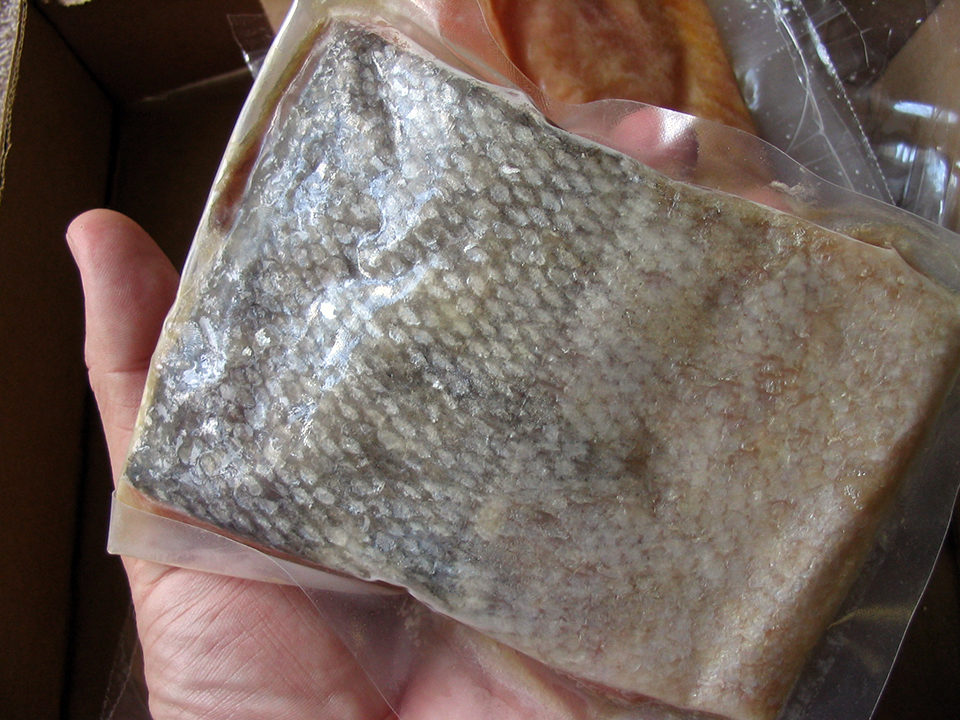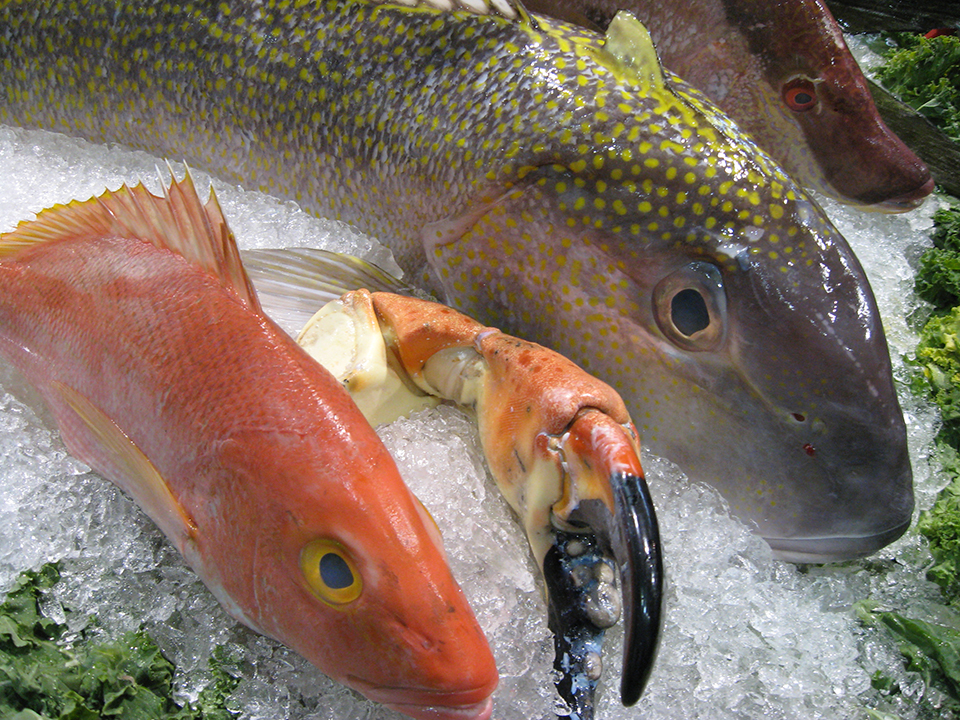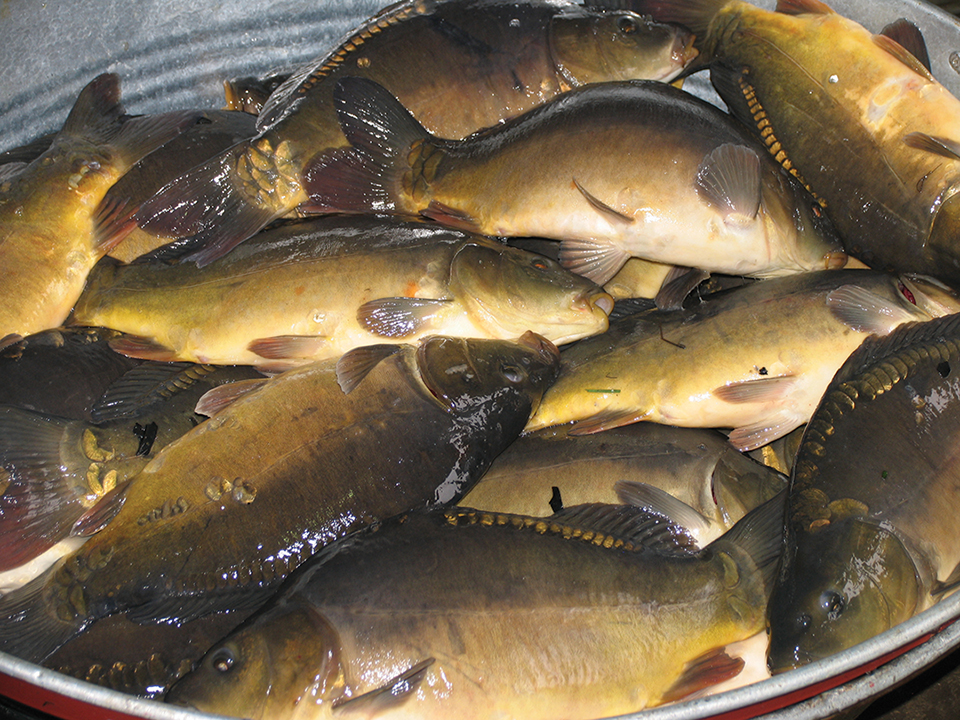Quality indicators, degradation reactions

The initial loss in the post-harvest quality of fish and shellfish is primarily caused by endogenous enzyme-mediated degradation of nucleotides and carbohydrates, rapidly followed by degradative reactions in nitrogenous compounds, and hydrolysis and peroxidation of lipids. During further post-harvest storage, bacterial activity contributes to the process of quality deterioration.
The rates of these processes can be predicted based on species, condition, infestation of parasites, initial and changing bacterial loads in and on the product, product handling and any preservative treatment applied.
Quality indicators
Enzyme activity has been used extensively as an indicator of quality change in fish and shellfish products. Most of the enzymes employed to evaluate product quality are endogenous and include:
- Enzymes used to evaluate quality – adenosine triphosphatase, lactic dehydrogenase, lysosomal and mitochondrial enzymes
- Enzyme products used as quality indicators – creatine, decomposition products of glycolysis
- Nucleotide degradation products – hypoxanthine, K-value
- Products of decarboxylases – histamine, total volatile base, total volatile nitrogen
- Products of trimethylamine N-oxide (TMAO) degradation – TMAO oxidereductase, TMAO demethylase
- Lipoxygenases – peroxide value, thiobarbituric acid number
- Other products – phenoloxidase, tryptophanase.
While enzyme assays are reliable indicators of quality, they are also time-consuming and require specialized laboratory equipment and trained technical personnel. Measuring the rate of change in enzyme activity is most often performed by estimating the concentration of the reaction product(s).
Enzymatic reactions in chilled seafood
Nucleotide catabolism
The two most important factors responsible for the loss of quality in seafood are nucleotide catabolism and glycolysis. It is useful to note that some early products of nucleotide degradation actually contribute to desirable flavors in seafood. However, as degradation proceeds, the end products have a detrimental effect on quality.
The flavors of seafood and the intensity of those flavors are related to the concentration of inosine monophosphate present. As long as reasonable concentrations of the compound are present, the seafood is considered a quality product.
The degradation of adenosine triphosphate (ATP) usually leads to the onset of rigor mortis. Rigor in fish muscle is recognized as representing high quality, since it indicates a product that was recently processed or caught. Normally, a fish in rigor has a tough muscle structure that becomes more tender in the post-rigor state. However, for some fish species, such as carp and rainbow trout, the muscle becomes soft while in full rigor.
Changes in nucleotide concentrations have been related to quality by an objective chemical analysis referred to as the K-value, the sum of the contents of inosine and hypoxanthine divided by the content of ATP and its degradation products. Unfortunately, the rates and pathways of nucleotide degradation vary with species and muscle type. Cultured species such as shrimp, abalone and scallops have ATP degradation rates that are greater at a storage temperature of 0 degrees-C than at higher temperatures. In these cases, the use of K-value analysis can result in a high-quality product being regarded as one of lesser quality.
The enzymatic removal of amines from adenosine monophosphate and adenosine results in the production of ammonia, which is a sign of product decomposition. Another compound produced by enzymatic degradation of nucleotides is hypoxanthine. This compound has also been associated with early product decomposition.
Carbohydrate catabolism
Glycogen, glucose and other complex sugars in muscle tissue are converted to lactate. The increasing formation of lactate is accompanied by a decrease in the sweetness associated with fresh fish. The formation of glucose from glycogen can also affect the color by causing browning. This browning is usually intensified over time and is especially problematic in canned crustacean products.
Changes in proteins, other nitrogenous compounds
The changes in protein and non-protein nitrogenous compounds by enzymes in muscle tissue and bacteria affect flavor, color and muscle texture. In muscle, the major effect is the destruction of connective tissue, which provides rigidity. Once muscle degradation initiates, the speed at which it progresses depends on factors that include microflora composition, storage temperature, physiological state of the fish, harvesting method and post-harvest handling.
The flesh of mollusks and crustaceans contains many free amino acids, which are important to their flavor. However, this is not usually the case with finfish, where free amino acids do not initially undergo much change.
The change in amino acid composition varies between species and the many post-harvest conditions to which products may be subjected. In some fish and shellfish species, especially cod and related species, trimethylamine oxide is degraded to several volatile amines, including ammonia and formaldehyde. This can be a particular problem in overwrapped product, since the ammonia and other compounds are trapped inside the package.
When the package is opened, a strong odor of ammonia may be emitted, resulting in rejection of an otherwise acceptable product. If the package is opened for a brief time, the odor can rapidly dissipate without impacting consumer perceptions of the product’s acceptability. Ammonia accumulation has been a greater problem at the retail level rather than at other places in the distribution chain.
Lipid changes
The hydrolysis and oxidation of lipids are important factors in the assessment of seafood quality. These changes are caused by enzymes in the fish as well as enzymes produced by contaminating microflora. As the microflora population expands, the rate of hydrolysis and oxidation also increase.
The decomposition of lipids is accompanied by an increase in alcohols, aldehydes, ketones and hydrocarbons. Some of these compounds contribute to the unpleasant flavors of stale seafood. These enzymes have also been shown to cause the loss of red or pink color in certain fish species. When the degradation of protein compounds is slowed, lipid oxidation can then become the major cause of quality deterioration.
Enzymatic reactions in frozen seafood
Fish and shellfish usually maintain their high-quality characteristics when properly packaged and stored at temperatures below minus-30 degrees-C. However, some quality loss is inevitable under even the most controlled conditions. Freezing can result in substantial product deterioration through enzyme action if the product is frozen slowly, which results in significant cell damage, or when the product is stored at temperatures only slightly below freezing.
Enzymatic changes in proteins occur through interactions with formaldehyde, free fatty acids and oxidized lipids. Some enzymes have been shown to increase their activity by 2.5 times after being subjected to a freezing and thawing process. Generally, the susceptibility to lipid oxidation follows a pattern that starts in ordinary muscle, then affects dark muscle and, finally, skin.
(Editor’s Note: This article was originally published in the July/August 2009 print edition of the Global Aquaculture Advocate.)
Now that you've reached the end of the article ...
… please consider supporting GSA’s mission to advance responsible seafood practices through education, advocacy and third-party assurances. The Advocate aims to document the evolution of responsible seafood practices and share the expansive knowledge of our vast network of contributors.
By becoming a Global Seafood Alliance member, you’re ensuring that all of the pre-competitive work we do through member benefits, resources and events can continue. Individual membership costs just $50 a year.
Not a GSA member? Join us.
Author
-

George J. Flick, Jr., Ph.D.
Food Science And Technology Department
Virginia Tech/Virginia Sea Grant (0418)
Blacksburg, Virginia 24061 USA[117,100,101,46,116,118,64,103,107,99,105,108,102]
Tagged With
Related Posts

Intelligence
Enzymes in seafood, part 1
Enzymes are responsible for postharvest changes in seafood that impact product characteristics and reduce value. The odor of seafood is a direct result of enzyme activity.

Health & Welfare
Cathepsin enzymes, part 1
Cathepsins B, D and L are considered critical in fish muscle post-mortem modifications or gel softening during the setting of surimi.

Health & Welfare
Cathepsin enzymes, part 2
Cathepsin D alone and in combination with other cathepsins presents the greatest proteolytic activity on some fish muscles.

Health & Welfare
A holistic management approach to EMS
Early Mortality Syndrome has devastated farmed shrimp in Asia and Latin America. With better understanding of the pathogen and the development and improvement of novel strategies, shrimp farmers are now able to better manage the disease.

